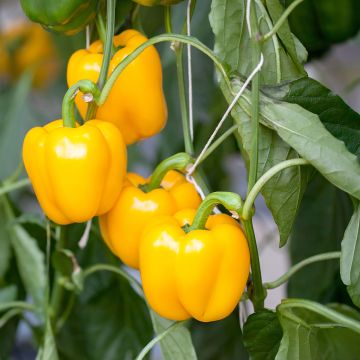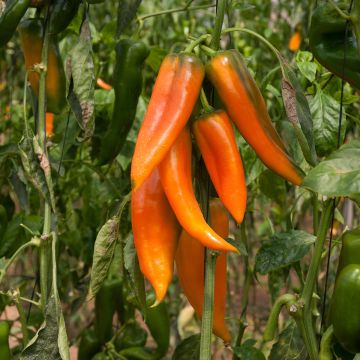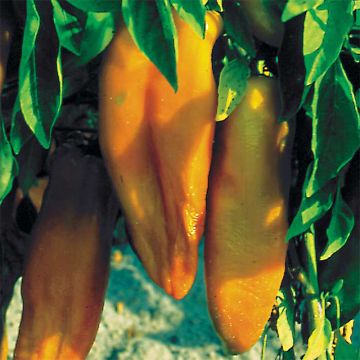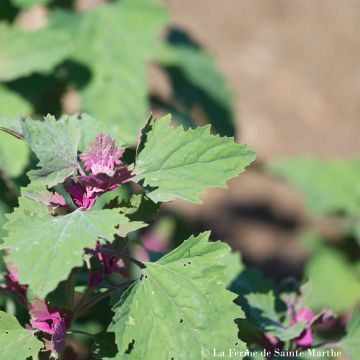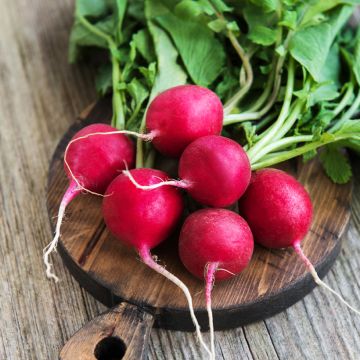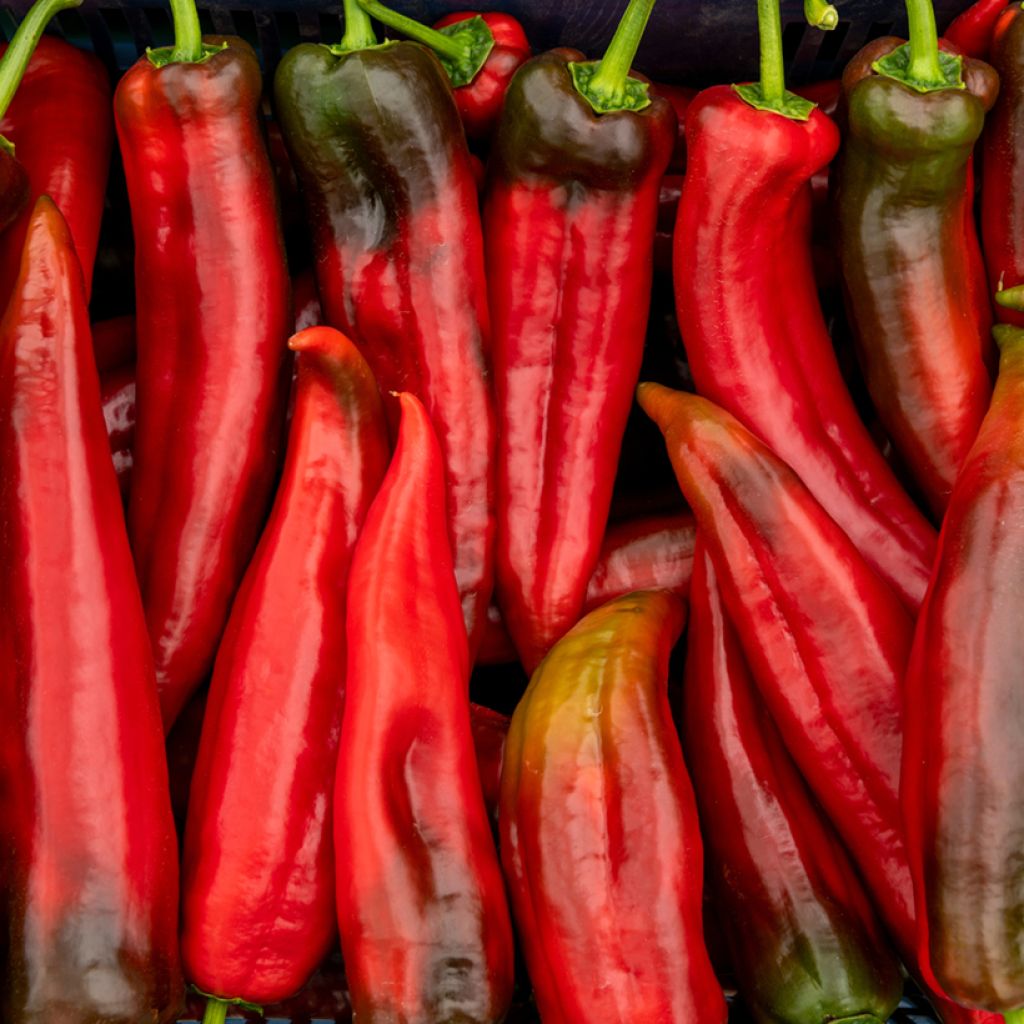

Bell pepper Corno di Toro Rosso seeds


Bell pepper Corno di Toro Rosso seeds
Bell pepper Corno di Toro Rosso seeds
Capsicum annuum Corno di Toro Rosso
Bell pepper, sweet pepper, chili pepper, cayenne pepper.
Special offer!
Receive a €20 voucher for any order over €90 (excluding delivery costs, credit notes, and plastic-free options)!
1- Add your favorite plants to your cart.
2- Once you have reached €90, confirm your order (you can even choose the delivery date!).
3- As soon as your order is shipped, you will receive an email containing your voucher code, valid for 3 months (90 days).
Your voucher is unique and can only be used once, for any order with a minimum value of €20, excluding delivery costs.
Can be combined with other current offers, non-divisible and non-refundable.
Home or relay delivery (depending on size and destination)
Schedule delivery date,
and select date in basket
This plant carries a 6 months recovery warranty
More information
We guarantee the quality of our plants for a full growing cycle, and will replace at our expense any plant that fails to recover under normal climatic and planting conditions.
Description
The 'Corno di Toro Rosso' Pepper is an Italian variety that offers curious elongated and incurved, red fruits, about 20 cm long and renowned for their sweet flavour and thick, delicious flesh. This pepper owes its name "Red Bull Horn" to the shape of its fruits that resembles a bull's horn. This sweet and sugary pepper is suitable for many culinary uses. You can enjoy it raw, incorporate it into salads, grill it, stuff it, or use it in various cooked dishes. It is an early variety, its fruit is among the first to ripen and preserves very well pickled in vinegar. Sow from February to May for a harvest from July to November.
We usually distinguish a difference between peppers and chillies. The pepper is a term for a chilli without or almost without capsaicin, the substance that produces the spicy, even burning effect.
The Pepper is a fruit vegetable which, like its very close relative the Chilli, belongs to the Solanaceae family. It is a perennial plant in tropical climates that is cultivated as an annual in our latitudes unless it has been potted so that it can be stored in warmth during the off-season. It produces small, white or purple flowers, with anthers or seeds of different colours depending on the species.
In the kitchen, the pepper is consumed raw in salads, quickly grilled, or cooked as a confit, in ratatouille or stuffed. It is one of those "sun fruits" much appreciated in summer.
In the garden or on the balcony for the most compact varieties, it is a vegetable plant that appreciates sun, heat, and regular watering. In cold climates, it benefits from being grown under cover. It is grown in rich soil, previously amended with 3 kg of compost per m2.
Harvest: the harvest takes place when the fruit has the colour it is supposed to have when ripe. Pick the fruits with a small knife or by hand as needed, taking care to leave one to two cm of the peduncle. Also, note that the pepper continues to ripen after being detached from the plant.
Storage: peppers can be stored for several days in the vegetable drawer of the refrigerator. Depending on the quantity of your production, you will most likely want to keep them a little longer. There are several methods: Firstly, drying can be done in several ways: either in the sun by cutting the peppers in half lengthwise. Air-drying indoors is only possible if the conditions are dry enough, otherwise the fruits will become soft. It can be done with whole fruits in the oven on the rack at low temperature (about 50°C) for several hours.
You can also opt for the preservation of fresh peppers. You can store them marinated in oil with herbs, in vinegar pickles style, or reduce them to puree. For these last methods, there are plenty of recipes. You can also freeze your peppers. In all cases, wash and dry them carefully.
The gardener's tip: To combat red spider mites, plant radishes nearby.
Report an error about the product description
Harvest
Plant habit
Foliage
Botanical data
Capsicum
annuum
Corno di Toro Rosso
Solanaceae
Bell pepper, sweet pepper, chili pepper, cayenne pepper.
Cultivar or hybrid
Annual
Other Peppers
View all →Planting and care
Peppers are easy to grow. Sun and heat play a decisive role in their success. They are happy with any soil even though they prefer rich, loose, and well-drained soil. You can enrich it with a little sand if the substrate is too compact.
Sowing under glass: from mid-February to May, sow indoors or in heated greenhouses in trays at around 20°C. Bury the seeds under 5 to 7 mm of seed compost as they need darkness to germinate. Do not use compost at this stage, as you might burn the future roots. The growth of Pepper plants is fast: the seeds germinate between 3 days after sowing and a week. This is an average. Do not discard a tray if the seeds have not germinated during this time, thinking they are irrecoverable. Some varieties are slow and take their time. When the plants have reached 5 to 6 true leaves, repot them in pots that will have a little more space for their roots and start acclimatising them outside on sunny days.
Transplanting in open ground: once the risk of frost is no longer a concern, usually around mid-May, transplant your plants into open ground. Choose the sunniest and warmest spots in the garden. At the foot of a wall facing due South is an ideal position. Loosen the soil and then dig a hole at least 3 to 4 times the volume of the root system of your plant. Amend the bottom with a little well-decomposed compost. Plant your pepper, which can be buried up to the first leaves, then backfill. Tamp, form a basin around the plant, then water generously. Be careful not to water the leaves to protect your plants from fungal diseases. If you wish to plant several plants, space them 60 cm apart in all directions.
Maintenance: laying mulch at the base of your plants helps maintain some moisture and avoids having to weed. Pepper plants do not need a lot of watering: their root system has a taproot that searches deeply for available resources. Water generously only in case of prolonged drought. If you have opted for container gardening, you can keep your Pepper plants for several years by storing them in a warm and well-lit place during the off-season. In pots, the plant cannot develop as efficient a taproot as in open ground. It is then necessary to water it regularly but moderately.
Seedlings
Care
Intended location
This item has not been reviewed yet - be the first to leave a review about it.
Similar products
Haven't found what you were looking for?
Hardiness is the lowest winter temperature a plant can endure without suffering serious damage or even dying. However, hardiness is affected by location (a sheltered area, such as a patio), protection (winter cover) and soil type (hardiness is improved by well-drained soil).

Photo Sharing Terms & Conditions
In order to encourage gardeners to interact and share their experiences, Promesse de fleurs offers various media enabling content to be uploaded onto its Site - in particular via the ‘Photo sharing’ module.
The User agrees to refrain from:
- Posting any content that is illegal, prejudicial, insulting, racist, inciteful to hatred, revisionist, contrary to public decency, that infringes on privacy or on the privacy rights of third parties, in particular the publicity rights of persons and goods, intellectual property rights, or the right to privacy.
- Submitting content on behalf of a third party;
- Impersonate the identity of a third party and/or publish any personal information about a third party;
In general, the User undertakes to refrain from any unethical behaviour.
All Content (in particular text, comments, files, images, photos, videos, creative works, etc.), which may be subject to property or intellectual property rights, image or other private rights, shall remain the property of the User, subject to the limited rights granted by the terms of the licence granted by Promesse de fleurs as stated below. Users are at liberty to publish or not to publish such Content on the Site, notably via the ‘Photo Sharing’ facility, and accept that this Content shall be made public and freely accessible, notably on the Internet.
Users further acknowledge, undertake to have ,and guarantee that they hold all necessary rights and permissions to publish such material on the Site, in particular with regard to the legislation in force pertaining to any privacy, property, intellectual property, image, or contractual rights, or rights of any other nature. By publishing such Content on the Site, Users acknowledge accepting full liability as publishers of the Content within the meaning of the law, and grant Promesse de fleurs, free of charge, an inclusive, worldwide licence for the said Content for the entire duration of its publication, including all reproduction, representation, up/downloading, displaying, performing, transmission, and storage rights.
Users also grant permission for their name to be linked to the Content and accept that this link may not always be made available.
By engaging in posting material, Users consent to their Content becoming automatically accessible on the Internet, in particular on other sites and/or blogs and/or web pages of the Promesse de fleurs site, including in particular social pages and the Promesse de fleurs catalogue.
Users may secure the removal of entrusted content free of charge by issuing a simple request via our contact form.
The flowering period indicated on our website applies to countries and regions located in USDA zone 8 (France, the United Kingdom, Ireland, the Netherlands, etc.)
It will vary according to where you live:
- In zones 9 to 10 (Italy, Spain, Greece, etc.), flowering will occur about 2 to 4 weeks earlier.
- In zones 6 to 7 (Germany, Poland, Slovenia, and lower mountainous regions), flowering will be delayed by 2 to 3 weeks.
- In zone 5 (Central Europe, Scandinavia), blooming will be delayed by 3 to 5 weeks.
In temperate climates, pruning of spring-flowering shrubs (forsythia, spireas, etc.) should be done just after flowering.
Pruning of summer-flowering shrubs (Indian Lilac, Perovskia, etc.) can be done in winter or spring.
In cold regions as well as with frost-sensitive plants, avoid pruning too early when severe frosts may still occur.
The planting period indicated on our website applies to countries and regions located in USDA zone 8 (France, United Kingdom, Ireland, Netherlands).
It will vary according to where you live:
- In Mediterranean zones (Marseille, Madrid, Milan, etc.), autumn and winter are the best planting periods.
- In continental zones (Strasbourg, Munich, Vienna, etc.), delay planting by 2 to 3 weeks in spring and bring it forward by 2 to 4 weeks in autumn.
- In mountainous regions (the Alps, Pyrenees, Carpathians, etc.), it is best to plant in late spring (May-June) or late summer (August-September).
The harvesting period indicated on our website applies to countries and regions in USDA zone 8 (France, England, Ireland, the Netherlands).
In colder areas (Scandinavia, Poland, Austria...) fruit and vegetable harvests are likely to be delayed by 3-4 weeks.
In warmer areas (Italy, Spain, Greece, etc.), harvesting will probably take place earlier, depending on weather conditions.
The sowing periods indicated on our website apply to countries and regions within USDA Zone 8 (France, UK, Ireland, Netherlands).
In colder areas (Scandinavia, Poland, Austria...), delay any outdoor sowing by 3-4 weeks, or sow under glass.
In warmer climes (Italy, Spain, Greece, etc.), bring outdoor sowing forward by a few weeks.

































